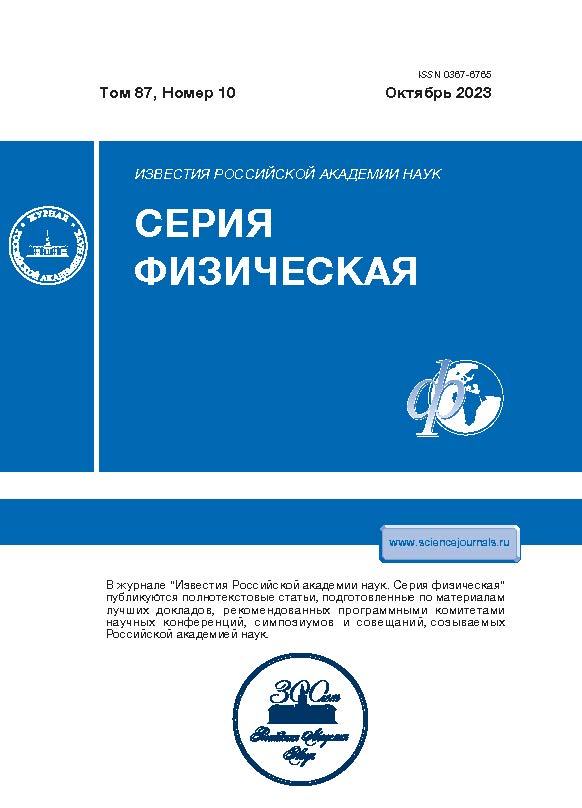Идентификация углеродных наночастиц в биологических образцах методами трансмиссионной электронной микроскопии
- Авторы: Масютин А.Г.1,2, Тарасова Е.К.2, Онищенко Г.Е.1, Ерохина М.В.1,2
-
Учреждения:
- Федеральное государственное бюджетное образовательное учреждение высшего образования “Московский государственный университет имени М.В. Ломоносова”, Биологический факультет, Кафедра клеточной биологии и гистологии
- Федеральное государственное бюджетное научное учреждение “Центральный научно-исследовательский институт туберкулеза”, Отдел патоморфологии, клеточной биологии и биохимии
- Выпуск: Том 87, № 10 (2023)
- Страницы: 1410-1415
- Раздел: Статьи
- URL: https://jdigitaldiagnostics.com/0367-6765/article/view/654580
- DOI: https://doi.org/10.31857/S0367676523702460
- EDN: https://elibrary.ru/PJZMVK
- ID: 654580
Цитировать
Полный текст
Аннотация
Углеродные наночастицы – распространенный тип наночастиц, идентификация которых в биологических образцах сопряжена с наибольшими трудностями. Продемонстрировано, что надежным и релевантным инструментом идентификации углеродных наночастиц в биологических образцах является применение стандартной трансмиссионной электронной микроскопии в сочетании с методом дифракции электронов.
Об авторах
А. Г. Масютин
Федеральное государственное бюджетное образовательное учреждение высшего образования“Московский государственный университет имени М.В. Ломоносова”, Биологический факультет,
Кафедра клеточной биологии и гистологии; Федеральное государственное бюджетное научное учреждение
“Центральный научно-исследовательский институт туберкулеза”,
Отдел патоморфологии, клеточной биологии и биохимии
Автор, ответственный за переписку.
Email: squiggoth@yandex.ru
Россия, Москва; Россия, Москва
Е. К. Тарасова
Федеральное государственное бюджетное научное учреждение“Центральный научно-исследовательский институт туберкулеза”,
Отдел патоморфологии, клеточной биологии и биохимии
Email: squiggoth@yandex.ru
Россия, Москва
Г. Е. Онищенко
Федеральное государственное бюджетное образовательное учреждение высшего образования“Московский государственный университет имени М.В. Ломоносова”, Биологический факультет,
Кафедра клеточной биологии и гистологии
Email: squiggoth@yandex.ru
Россия, Москва
М. В. Ерохина
Федеральное государственное бюджетное образовательное учреждение высшего образования“Московский государственный университет имени М.В. Ломоносова”, Биологический факультет,
Кафедра клеточной биологии и гистологии; Федеральное государственное бюджетное научное учреждение
“Центральный научно-исследовательский институт туберкулеза”,
Отдел патоморфологии, клеточной биологии и биохимии
Email: squiggoth@yandex.ru
Россия, Москва; Россия, Москва
Список литературы
- Simakov S.K. // Geosci. Front. 2018. V. 9. No. 6. P. 1849.
- Notarianni M., Liu J., Vernon K. et al. // Beilstein J. Nanotechnol. 2016. V. 7. P. 149.
- Bandlapalli C., SreeGaddam H.U., Chintmaneni P.K. et al. // Saudi J. Med. Pharm. Sci. 2021. V. 7. No. 8. P. 395.
- Suzuki S., Mori S. // J. Air Waste Manag. Assoc. 2017. V. 67. No. 8. P. 873.
- Losacco C., Perillo A. // Environ. Sci. Pollut. Res. 2018. V. 25. Art. No. 33901.
- Strojny B., Kurantowicz N., Sawosz E. et al. // PLoS ONE. 2015. V. 10. No. 12. Art. No. e0144821.
- Glaeser R.M., Gareth T. // Biophys. J. 1969. V. 9. No. 9. P. 1073.
- Yuan X., Zhang X., Sun L. et al. // Part. Fibre Toxicol. 2019. V. 1. No. 16. P. 18.
- Malatesta M. // Int. J. Mol. Sci. 2021. V. 22. P. 12789.
- Mühlfeld C., Rothen-Rutishauser B., Vanhecke D. et al. // Part. Fibre Toxicol. 2007. V. 4. Art. No. 11.
- Kurynina A.V., Erokhina M.V., Makarevich O.A. et al. // Biochem. 2018. V. 83. No. 3. P. 200.
- Кирпичников М.П. Порядок выявления и идентификации агрегатов многостенных углеродных нанотрубок в срезах тканей животных и растений методами аналитической электронной микроскопии: Методические рекомендации МР 1.2.0045-11. М.: ФЦГиЭ Роспотребнадзора, 2012. с. 39.
- Reynolds E.S. // J. Cell Biol. 1963. V. 1. No. 17. P. 208.
- Sasaki H., Arai H., Kikuchi E. et al. // Sci. Reports. 2022. V. 12. No. 1. P. 7756.
- Yildirimer L., Thanh N.T.K., Loizidou M. et al. // Nano Today. 2011. V. 6. No. 6. P. 585.
- Joshi A., Kaur S., Singh P. et al. // Appl. Nanosci. 2018. V. 6. No. 8. P. 1399.
- Nagaraju K., Reddy R., Reddy N. // J. Appl. Biomater. Funct. Mater. 2015. V. 4. No. 13. Art. No. e301-12.
- Coméra C., Cartier C., Gaultier E. et al. // Part. Fibre Toxicol. 2020. V. 1. No. 17. P. 26.
- Shebanova A. S., Bogdanov A.G., Ismagulova T.T. et al. // Biophysics. 2014. V. 2. No. 59. P. 284.
- Gass M., Porter A., Bendall J. et al. // Ultramicroscopy. 2009. No. 110. P. 946.
- Snyder-Talkington B.N., Schwegler-Berry D., Castranova V. et al. // Part. Fibre Toxicol. 2013. V. 10. P. 35.
Дополнительные файлы















